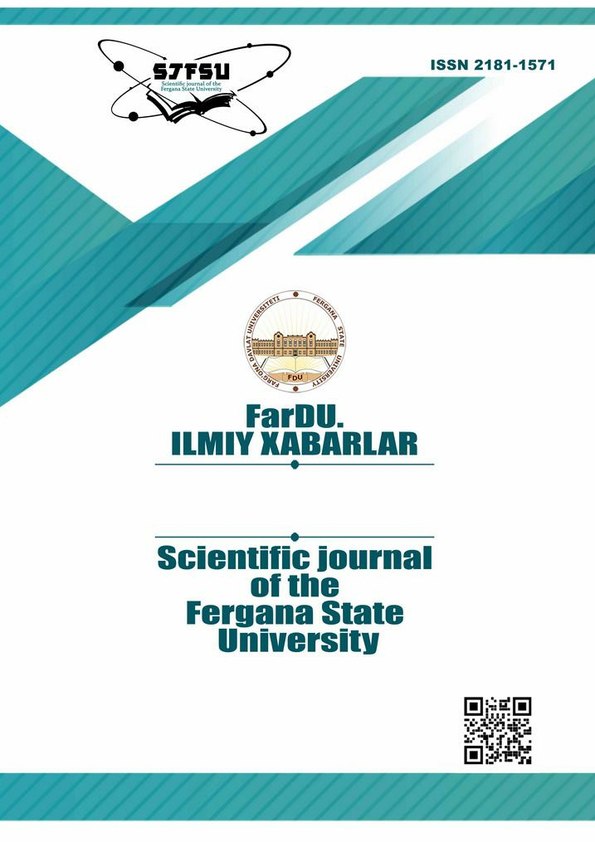USE OF UNIONS WITH BIRD NAMES IN ENGLISH AND UZBEK LANGUAGES, COMPARATIVE ANALYSIS OF ORNITONYMS
Keywords:
language, linguistics, semantics, pragmatics, ornithonyms, analysis, comparison, lexeme, meaningAbstract
The connotations of a particular language subject are strongly influenced by various cultural, environmental, social, religious, and political factors, as opposed to its denotations. Accordingly, any analysis of the connotations of linguistic elements provides insight to understand language-specific parameters and to identify nonlinguistic similarities and differences between languages. The study of the metaphorical use of ornithonyms can shed light on language-specific cultural models that refer to connotations of specific animal terms to define human characteristics. An analysis of the use of bird name metaphors usually leads to an important understanding of the dominant cultural model of a particular society. This article discusses these issues and analyzes the features of the use of ornithonyms in two languages in terms of differences and similarities.
References
Domínguez, P. & Málaga, U. (2006). Animal names used as insults and derogation in Polish and Spanish. Philologia Hispalensis, 20, 137-174.
Berlin B, Breedlove DE, Raven PH 1973. General principles of classification and nomenclature in folk biology. American Anthropologist 75: 214–242.
Cambridge English dictionary.
Reverso Context Dictionary.
Fiodorov, A. F. (2004). Birds of our winged friends. Yoshkar-Ola.
Kilyeni, A. and Silaški, N. (2014). Beauty and the beast from a cognitive linguistic perspective: Animal metaphors for women in Serbian and Romanian. Gender Studies, 13(1), 163-178.
Kövecses, Z. (2003). Metaphor and emotion: Language, culture, and body in human feeling. Cambridge: Cambridge University Press.
Kreidler, C. (1998). Introducing English semantics. London: Routledge.
Lakoff, G. & Johnsen, M. (2003). Metaphors we live by (2nd edn.). Chicago: The University of Chicago Press. semantics. Nauka: Moscow.
Cowie, A. P. (1998). Phraseology, Theory, Analysis, and applications. Clarendon press: Oxford.
Soboleva, N. P. (2016). Translation of phraseological units used in film taglines, Linguoculturological aspect. Journal of Language and Literature, 7(2): 348-52
Lakoff, G. & Turner, M. (1989). More than cool reason: A field guide to poetic metaphor. Chicago: The University of Chicago Press.
Gerasimova, O.I. (1991). Birds are my friends. Yoshkar-Ola.
Kubryakova, E.S. (1977). Theory of nomination and word formation / Language nominations. Moscow: Nauka. Vasiliev, V.N. (1985).
Teliya, V. N. (1986). The connotative aspect of nominative semantics. Nauka: Moscow.
Linklar:
https://parenting.firstcry.com/articles/50-bird-names-for-your-gorgeousbaby-girl/
https://uzbekistan.birds.watch/v2photo.php?l=en&s=000700137&n=1&si=uzb
https://uz.wikipedia.org/wiki/Qizilishtonlar
https://www.merriam-webster.com/dictionary/cock
https://www.cambridge.org/core/journals/language
Downloads
Published
Issue
Section
License

This work is licensed under a Creative Commons Attribution-NonCommercial-NoDerivatives 4.0 International License.
How to Cite
Most read articles by the same author(s)
- , ABOUT THE STUDY OF ORNITONYMS IN UZBEK AND WORLD LINGUISTICS , Scientific journal of the Fergana State University: No. 6- TOM (2023): SPECIAL ISSUE
- , , ORNITHONYMS IN ROOT WORD POSITION , Scientific journal of the Fergana State University: No. 3 (2024): Scientific journal of the Fergana State University. Application set (Social humanities sciences)

